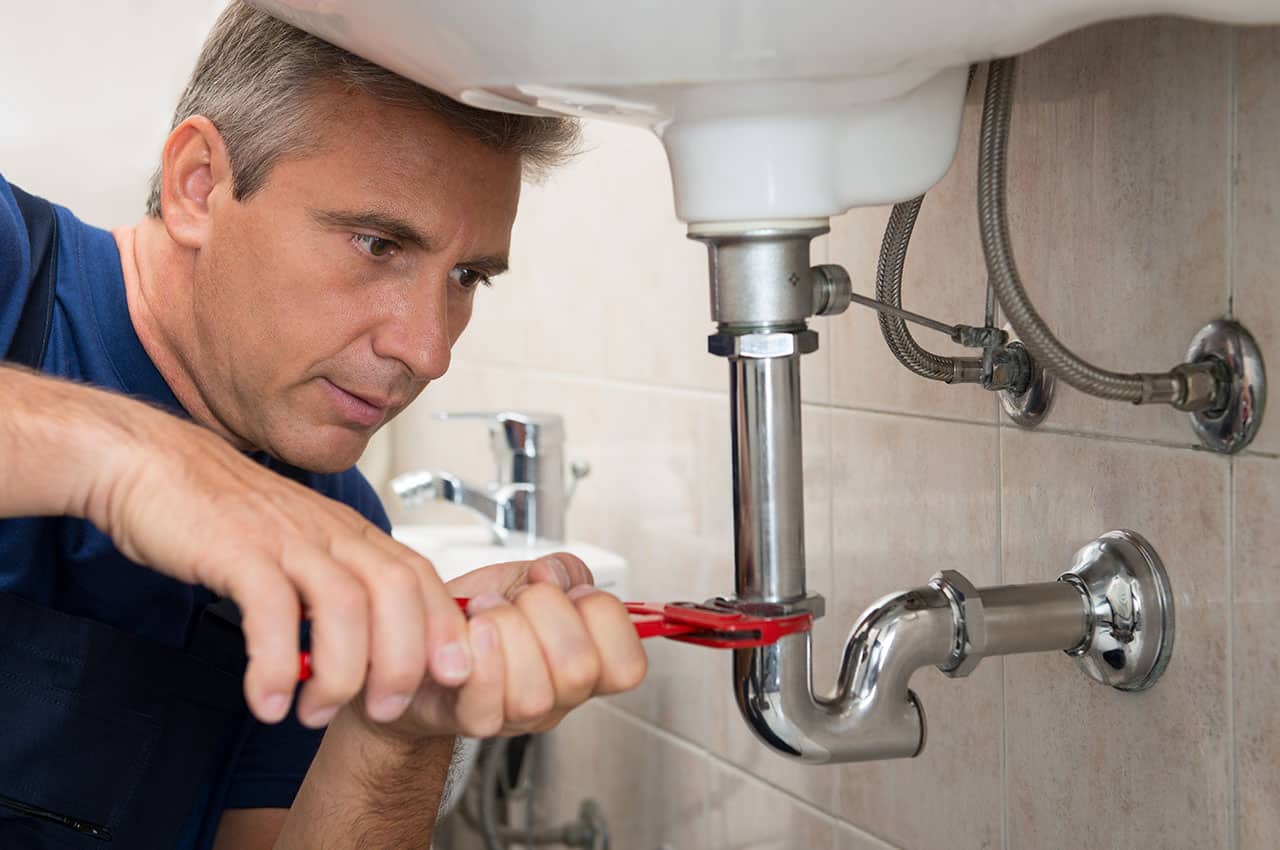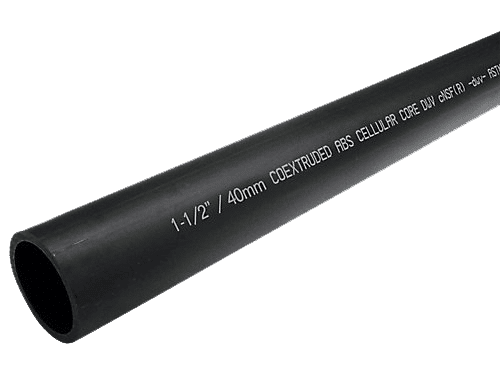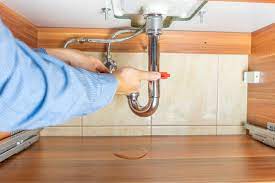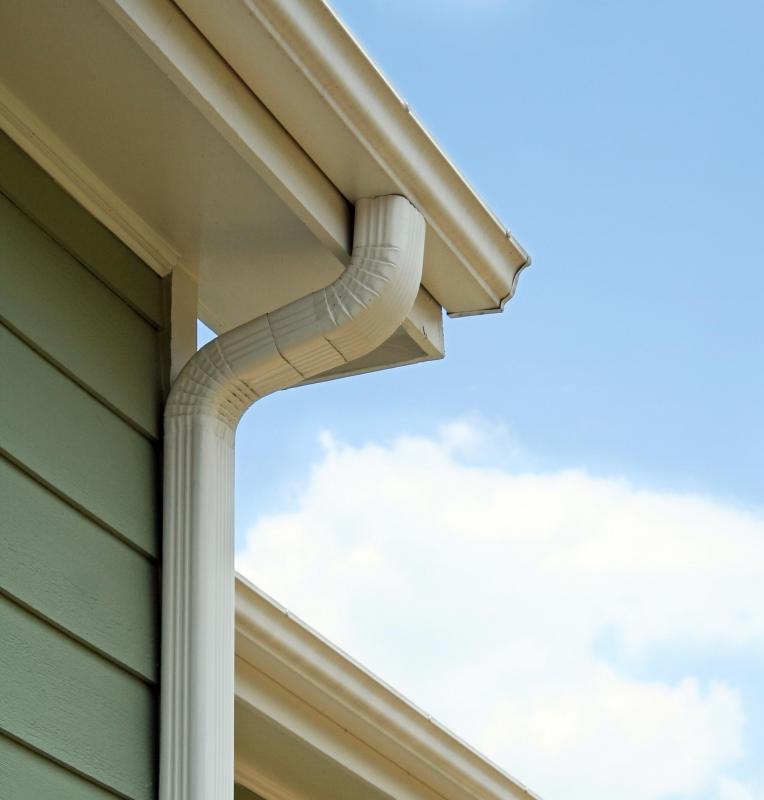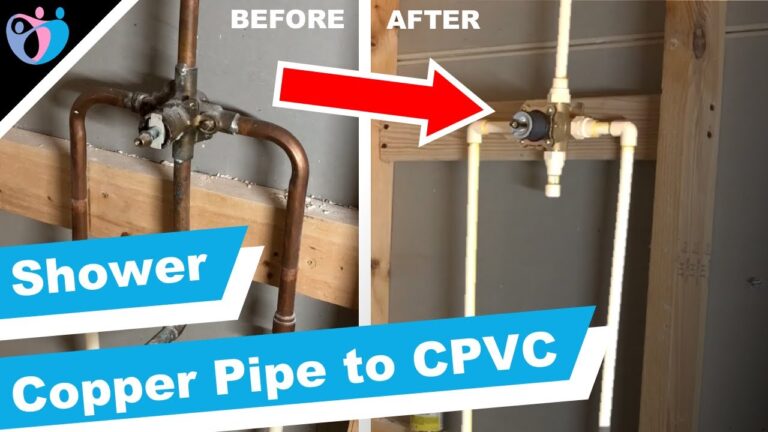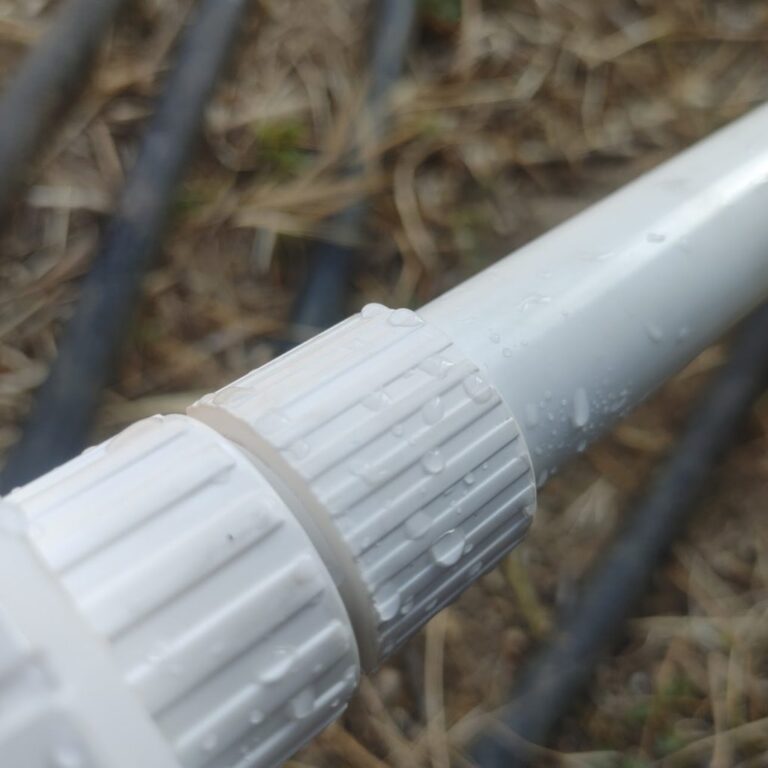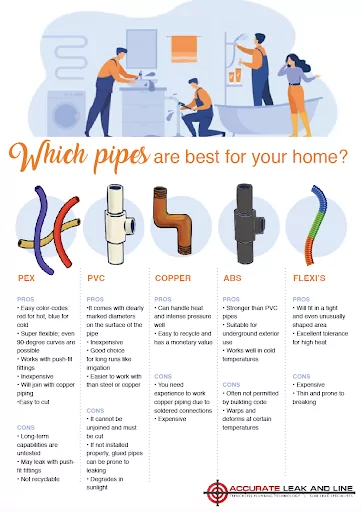How Do You Maintain Plumbing Pipes?
Plumbing pipes are essential for transporting water and waste in a home. Proper maintenance of these pipes is critical to ensure that the system remains functional and efficient. Some maintenance tasks that should be done include checking for leaks, identifying clogs and cleaning pipes regularly. By taking these steps, you can prevent costly repairs and ensure that your plumbing system is working properly.
Common Types of Plumbing Pipes
The plumbing system in your home is a complex network of pipes and fixtures that are essential for supplying you with fresh water, disposing of waste, and even helping with your home’s heating and cooling. For your plumbing system to function properly, you need to make sure you have the right type of pipes in place. In this article, we’ll discuss the different types of plumbing pipes and their uses.
PVC pipes are the most common type of plumbing pipe and are used for both cold and hot water. PVC pipes are lightweight, durable, and easy to install, and they’re resistant to corrosion and chemicals. They’re also relatively inexpensive and have a long lifespan. PVC pipes are available in a variety of sizes and can be used in a wide range of applications.
Copper pipes are another popular type of plumbing pipe and are used for hot and cold water. Copper pipes are durable and corrosion-resistant, and they can also withstand high temperatures. Copper pipes are a bit more expensive than PVC pipes, but they can last for many years.
PEX pipes are a newer type of plumbing pipe that is quickly gaining popularity. PEX pipes are flexible and easy to install, and they’re resistant to corrosion and temperature changes. PEX pipes are also relatively inexpensive and are available in a variety of sizes.
Galvanized steel pipes are commonly used for water supply lines and are made from steel that has been galvanized with zinc. Galvanized steel pipes are strong and durable, but they can corrode over time and can be difficult to work with.
Finally, there are flexible pipes made of rubber or plastic that are used in some applications. These pipes are easy to install and can be used to replace rigid pipes in tight spaces. However, they’re not as durable as other types of pipes and may need to be replaced more often.
No matter what type of plumbing pipe you choose, it’s important to make sure it’s installed correctly and maintained regularly. With the right type of pipe and proper maintenance, your plumbing system will be able to provide you with reliable service for many years to come.
Maintenance Tips for Different Types of Plumbing Pipes
Properly maintaining your plumbing pipes is essential to keeping your home functioning and avoiding costly replacements. Different types of pipes require different maintenance techniques, so it is important to familiarize yourself with the maintenance needs of the pipes in your home. Here are some tips to help you maintain plumbing pipes of varying types.
Galvanized steel pipes often require replacement due to corrosion. To avoid this, you should regularly inspect the pipes for signs of rust, and if any rust is found, you should sand it off and then apply a rust inhibitor. It is also important to flush the pipes regularly in order to remove sediment buildup.
Copper pipes should be checked for signs of wear and tear, including cracks or holes. If any damage is detected, it is important to replace the pipe immediately. To prevent corrosion of the copper, you should also use a non-abrasive cleaner to clean the inside of the pipes.
Plastic pipes are more resistant to corrosion, but they can still be damaged by sharp objects or chemicals. Make sure to inspect the pipes regularly for any signs of damage, and if any damage is noticed, the pipe should be replaced. You should also use a soft cloth to clean the outside of the pipes.
Finally, cast iron pipes may need to be replaced due to corrosion as well. To prevent corrosion, you should apply a sealant to the pipes and inspect them for signs of rust or wear and tear. You should also regularly flush the pipes to remove any sediment buildup.
By following these tips, you can ensure that your plumbing pipes are well-maintained and operating properly. Regular inspections and maintenance of your pipes will help you avoid costly replacement costs and keep your home functioning properly.
Benefits of Regular Plumbing Pipe Maintenance
Regular plumbing pipe maintenance is essential for keeping your pipes in top condition. It can save you money in the long run, prevent costly repairs, and help ensure that your plumbing system functions properly. Regular maintenance can also help reduce the risk of water damage, blockages, and other plumbing issues. Here are some of the benefits of regular plumbing pipe maintenance:
1. Prevention of Clogs: Regular maintenance helps to clear out any debris that may be lodged in your pipes, preventing clogs. This can help ensure that water flows freely and prevents blockages that can lead to costly repairs.
2. Protection from Water Damage: Regular maintenance helps detect any leaks or cracks in your pipes that could lead to water damage. This can help you avoid costly repairs and water damage to your home.
3. Improved Efficiency: Regular maintenance can help identify any issues with your plumbing system that could affect the efficiency of your system. This can help you reduce your energy bills and ensure that your system is running efficiently.
4. Longer Lifespan: Regular maintenance can help extend the lifespan of your plumbing system. This can help you save money in the long run by avoiding costly repairs or replacements.
Regular maintenance of your plumbing system is essential for keeping your pipes in good condition. It can help you save money, prevent costly repairs, and ensure that your plumbing system functions properly. Taking the time to inspect and maintain your plumbing pipes can help you avoid costly repairs in the future.

Tools and Materials Needed for Plumbing Pipe Maintenance
Maintaining plumbing pipes is essential for the safety and efficiency of any home. To keep them in working order, it’s important to have the right tools and materials on hand. For most maintenance tasks, a few basic supplies are necessary, such as a wrench, pliers, and a pipe vice. A hacksaw and a pipe cutter may also be needed. To ensure that connections are secure, it’s important to have a variety of fittings and sealants. Additionally, an adjustable wrench, a pipe brush, a plunger, and a pipe snake are essential. For any clogs or blockages, it’s important to have a drain cleaner on hand. Finally, to ensure that all your plumbing pipes are in good condition, having a plumbing camera to inspect them is highly recommended. With the right tools and materials, plumbing pipe maintenance can be easy and successful.
Common Plumbing Pipe Maintenance Issues
Plumbing pipes are an essential part of any home or business. Maintaining them is key to ensuring that they remain in good condition and continue to serve their purpose. Common plumbing pipe maintenance issues can include clogs, leaks, corrosion, and inadequate pressure. To prevent or resolve these issues, regular maintenance should be done to ensure that pipes remain in good condition. This can include checking for signs of corrosion or leaks, as well as flushing out pipes and cleaning out drains. Additionally, checking the pressure of the pipes and replacing any parts that are worn out can help to ensure that the pipes remain in optimal condition. By taking the proper steps to maintain the plumbing pipes, individuals can help to ensure that they remain in good working order and avoid costly repairs or replacements down the road.
Preventative Measures for Plumbing Pipe Maintenance
Plumbing pipes are the lifeblood of any home or business and if not properly maintained, can lead to costly repairs and replacements. Fortunately, there are a number of preventative measures that can be taken to help ensure that your pipes remain in good condition for years to come. From regular inspections to appropriate water pressure, there are many proactive steps you can take to maintain your plumbing pipes.
Regular inspections are an essential element of any pipe maintenance plan. This involves inspecting your pipes for signs of wear and tear, as well as checking for any potential leaks or clogs. Additionally, an inspection allows you to identify any areas that could benefit from repairs or replacements.
It is also important to maintain proper water pressure in your pipes. Too much or too little pressure can cause wear and tear on the pipes, leading to premature failure. You can use a pressure gauge to ensure that your pipes are at the correct pressure for optimal performance.
Finally, it is important to use the right type of pipes for your plumbing system. Different types of pipes are designed for different applications and by using the wrong type of pipe, you could end up with a plumbing system that is vulnerable to leaks and other damage. Make sure to consult a professional plumber to ensure that you use the correct type of pipes for your needs.
By taking these preventative measures, you can help ensure that your plumbing pipes remain in good condition for years to come. Regular inspections, appropriate water pressure, and the right type of pipes are all important components of a successful pipe maintenance plan. With the right approach, you can keep your pipes in excellent condition and avoid costly repairs.
FAQs About the How Do You Maintain Plumbing Pipes?
1. How often should I inspect my plumbing pipes for wear and tear?
Answer: It is recommended to inspect your plumbing pipes regularly, at least once a year, to check for signs of wear and tear. If you notice any issues, it is best to contact a qualified plumber to assess the situation and repair any damage promptly.
2. How can I prevent my plumbing pipes from freezing in the winter?
Answer: To prevent your plumbing pipes from freezing, it is important to insulate exposed pipes with foam insulation. Additionally, keep the interior temperature of your home consistent and make sure to keep cabinets open in rooms with plumbing fixtures to allow warm air to circulate.
3. How can I tell if my plumbing pipes are leaking?
Answer: One of the most common signs of a leaking plumbing pipe is water pooling around the base of the fixture or on the floor. Additionally, you may notice a decrease in water pressure or a sudden spike in your water bill. If you suspect you have a leak, it is best to contact a qualified plumber right away.
Conclusion
Maintaining plumbing pipes is a necessary task to ensure your plumbing system is running properly and efficiently. Regular inspections and cleaning of plumbing pipes can help prevent blockages, leaks, and other potential problems. Additionally, using the right materials and techniques when repairing or replacing parts can help to extend the life of your pipes. Following these tips and best practices can help you maintain your plumbing pipes for optimal performance and a long-lasting plumbing system.

